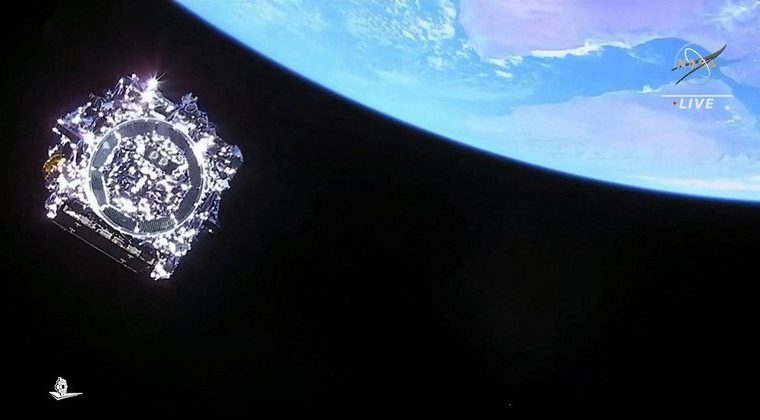
The mighty James Webb Space Telescope successfully completed the final phase of its deployment this Saturday (8), opening its last main mirror and preparing to begin studying each phase of the history of the universe.
The first of its two wings was released yesterday, and the second on Saturday morning, NASA announced.
Engineering teams at the Space Telescope Institute in Baltimore, Maryland, celebrated the moment NASA tweeted that the final wing was ready. “Final wing now deployed,” the agency tweeted, adding that the team worked “to secure the wing”. A multi-hour process.”
The main mirror of this iconic telescope is about 6.5 meters in diameter, so it was too large to accommodate the rocket, as it was launched two weeks ago. Because of this both its sides were bent.
Deployment was a complex and challenging task, NASA said, noting that it is the most difficult project ever.
Webb, the most powerful space telescope ever built and successor to Hubble, took off from French Guiana on an Ariane 5 rocket on December 25 and headed for its orbital point 1.5 million kilometers from Earth.
Although Webb will reach its space destination, known as the second Lagrange point, in weeks, it still has five and a half months to complete.
first galaxy
Its infrared technology allows it to see the first stars and galaxies that formed 13.5 billion years ago, giving astronomers a new perspective on the universe’s first era.
“Before we celebrate, we still have work to do,” NASA expressed in its live update. “Once the final lock is secured, NASA Webb will be fully deployed in space,” he said.
Earlier this week, the telescope deployed its five-layer heat shield, a 21-meter-long device that acts as a sunshade that ensures Webb’s instruments remain in shadow so they can travel to the ends of the universe. detect faint infrared signals.
The telescope’s mission includes studying distant planets to determine their origin, evolution, and habitability.
NASA’s blog about the telescope said Saturday that the process was “the last of the observatory’s major deployments.” According to John Durning, the space agency’s deputy chief of design for the telescope, the deployment was “100% successful.”
“It was probably the riskiest part of the mission,” Bill Ochs, NASA’s project director for Webb, told a news conference. “That doesn’t mean all our risk is gone.”
According to the NASA blog, “its success will allow the development of tasks over the next five and a half months, including establishing a stable operating temperature, aligning mirrors and calibrating scientific instruments”.



